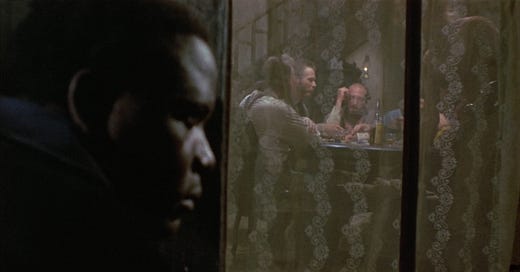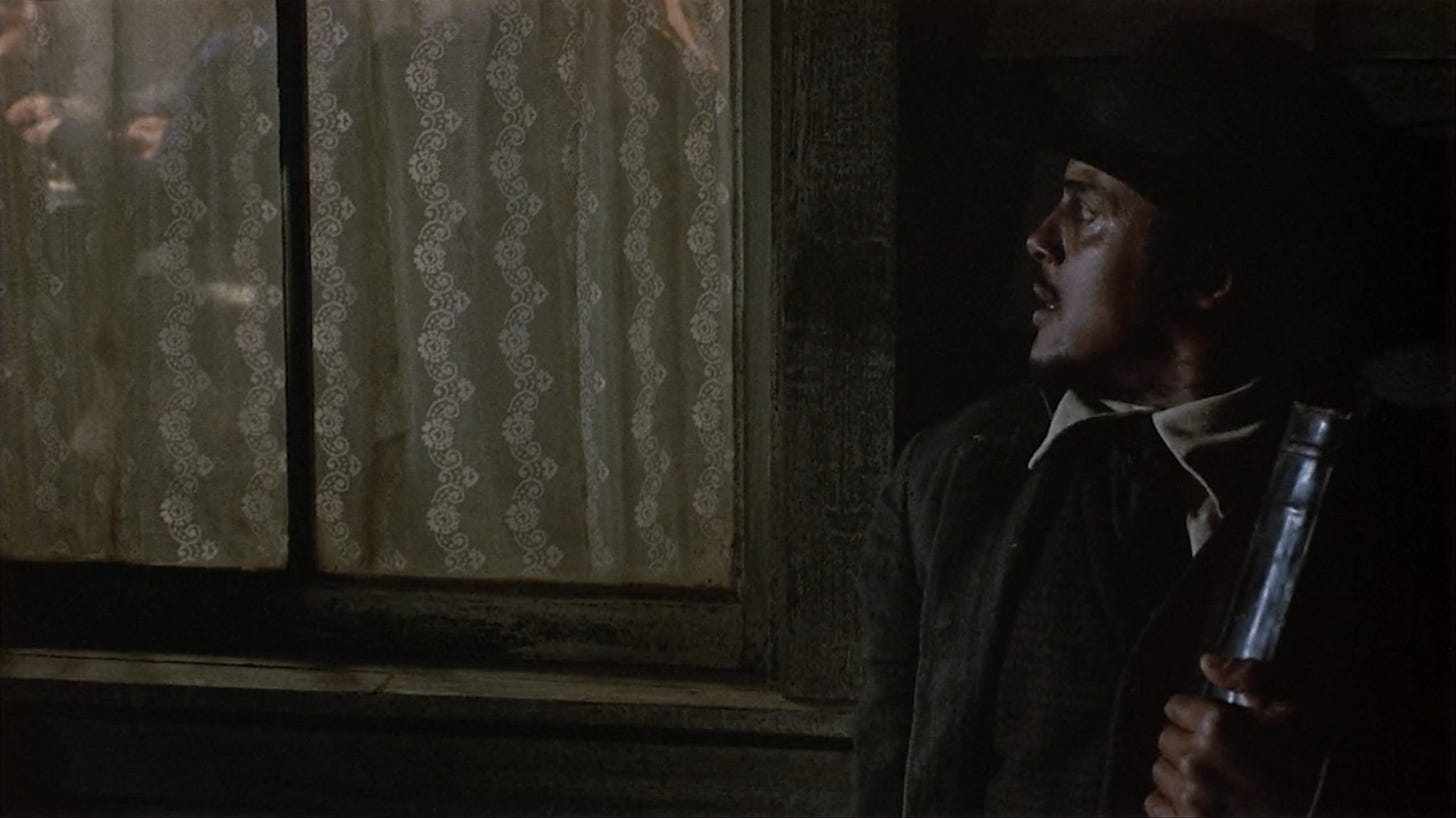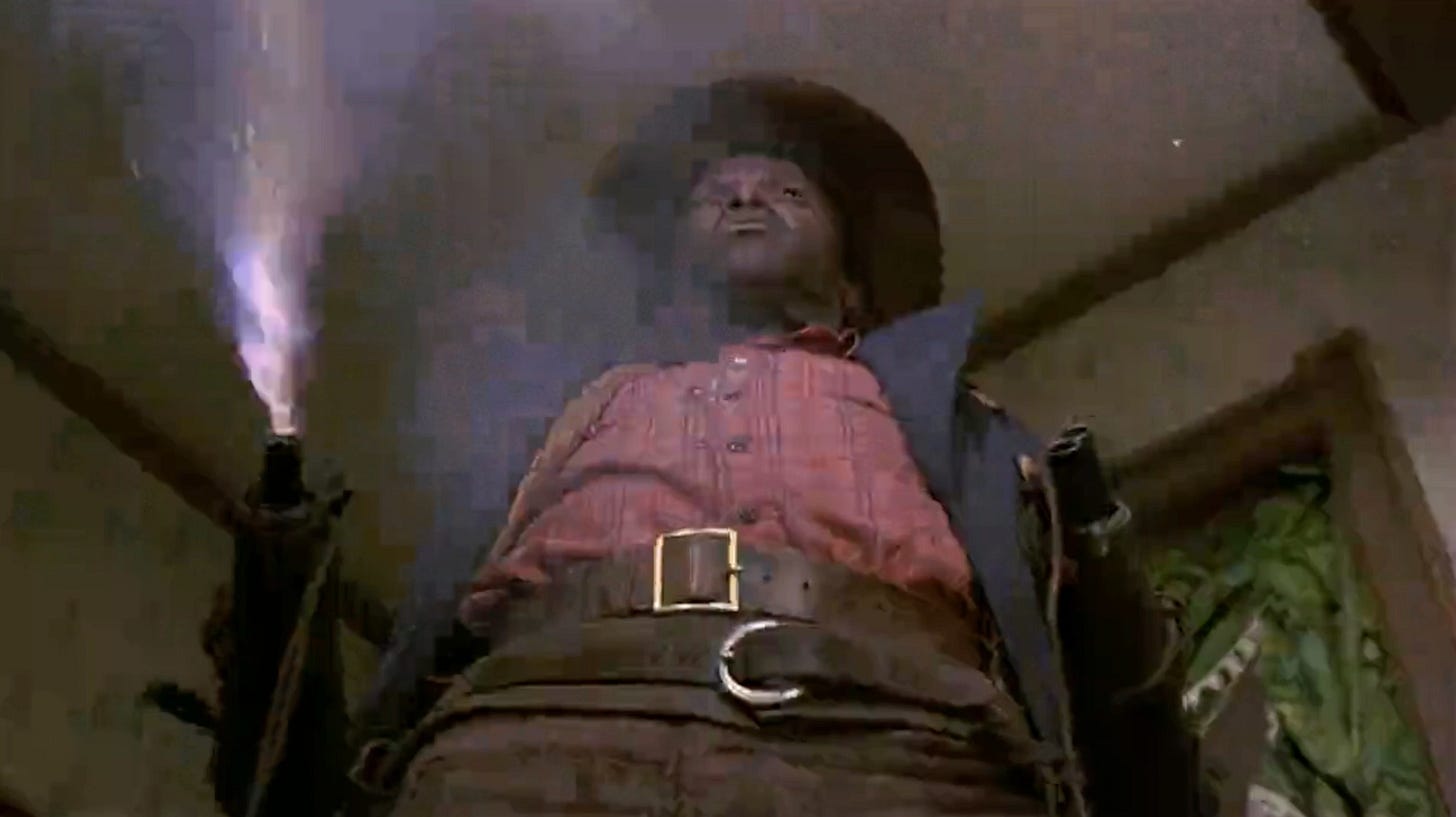Sidney Poitier made his feature directorial debut with this 1973 Western (give or take several subgenres) in which he also plays Buck to Harry Belafonte’s Preacher.
Poitier wasn’t intending to direct; he took over a few days into production! But after decades of acting and producing, with a stated personal draw to this story and the importance of its themes and content, he clearly put incredible thought into how and why it should be directed.
With that: five of our favourite shots!
Blocking to Surprise
Preacher sends a kid — the only person in the vicinity — on an errand so he can jauntily scope around for something to steal. It plays as amusing as he checks the length of some laundered long johns against his arm . . . but it gets serious real quick with a cut to the opposite camera angle, where his outstretched arm frames the racist gang approaching in the distance.
The camera zoom + cut to the rapidly approaching gang accentuates what danger Preacher is in.
Forced Focus
When the camera is on Buck, the focus is on the men inside, because they’re all he’s thinking about and because we need to see the lay of the land.
When the camera is on Preacher, so is the focus, because he’s only thinking about himself and what he’s about to do when he strolls through that door.
What, exactly is he about to do, you ask? See our last two shots!
Lensing a Closeup
This shot does so much in one frame:
shows the audience Deshay (Cameron Mitchell) hiding behind Ruth (Ruby Dee) while making clear nobody out away from them would be able to see him and thus understand what is happening
conspicuously making it clear Deshay is a low-down coward
related, making clear he is ‘lower than’ Ruth
using a wide-ish lens to accentuate the terror Ruth feels in the moment
using Ruth’s proximity to to the lens (thus the screen / audience) put us close inside her experience
Setup for an Ambush
Amongst the film’s serious Western edge, Preacher is written as comic relief / sidekick, and Belafonte plays it to the hilt; he knows he’s funny, he leverages that to charm his friends and gain an edge over his adversaries.
Here those enemies are seated, and he just has to distract his captive audience until Buck can come back him up.
We see the overall room setup both from outside the window, and a wider shot when Preacher comes in.
Immediately pre-ambush, shots show closeups of Deshay and his men — the better to see their cigar-chomping villainy, my dear — and low-angled shots of the Preacher because the men would be looking slightly up at him (1, 2, 3, below).
In a medium shot, Preacher bows and then steps aside (3, below) so we can see the door as Buck makes his entrance, and makes the single medium of Preacher a double medium of the titular Buck and the Preacher (4, below).






After a quick beat to show us all the men realising what’s just happened (5, above), and another to let Buck deliver a Western-befitting punch line (6, above)
it’s Deshay’s eyes flicking from Buck’s face to Buck’s guns which kicks off the chaos.





Five cuts in five seconds give us multiple back-and-forths between the ‘good guys’ and the ‘bad guys,’ during which point we hear uncountable gunshots and witness this glorious, smoke-and-flying-poker-chips-and-overturned-table-and-sprawling-bad-guys shot before silence falls . . .
and the scene cuts to the Sheriff having breakfast, a cut which is darkly funny as well as underscoring how little the Wild West — and specifically Black and Native peoples — could rely on official justice, even if the justice were ‘well meaning’ as this Sheriff.
And Finally . . .
If you’re going to direct yourself in a picture, why not give yourself an absolute banger of a shot, showing you from a low angle like a god firing two hand-canons.







Love this film